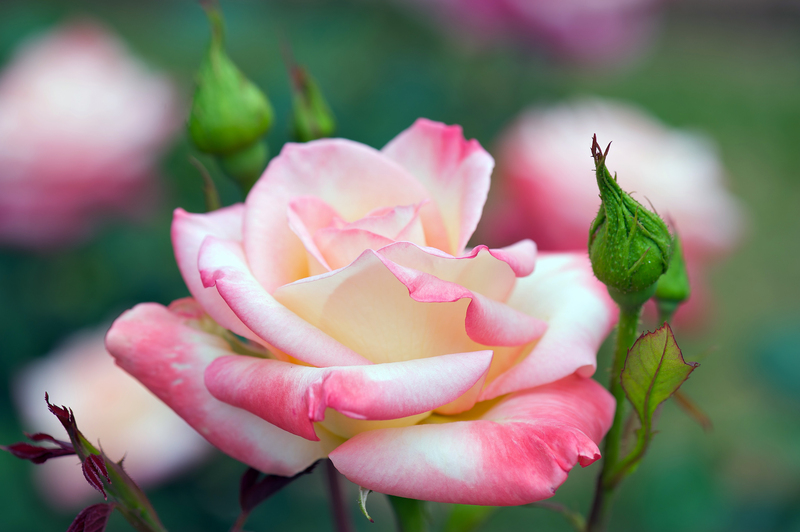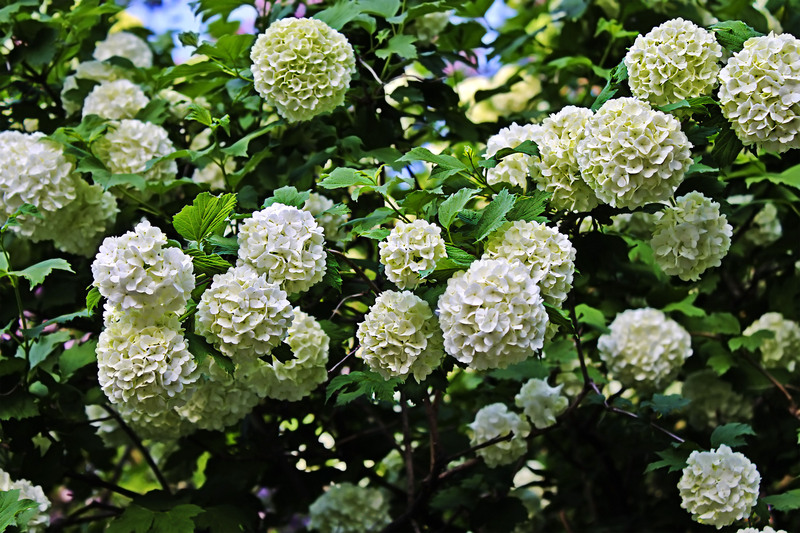Vertical gardening: a canvas of living art
Posted on 13/08/2025
Vertical Gardening: A Canvas of Living Art
Vertical gardening is revolutionizing the way we think about greenery in urban and limited spaces. More than a practical solution to spatial constraints, it transforms walls, fences, and other upright surfaces into enchanting tapestries of lush, vibrant plants. This innovative form of horticulture not only maximizes space but also creates a dynamic canvas of living art that enlivens interiors and exteriors alike.

What is Vertical Gardening?
At its core, vertical gardening refers to the practice of growing plants upwards using structures, frameworks, or containers fixed to vertical surfaces. Also known as living walls, green walls, or plant walls, these installations can be as simple as a few hanging pots on a balcony or as complex as high-tech, automated systems encompassing entire building facades. The result is a visually stunning and beneficial infusion of greenery wherever traditional, horizontal gardening may not be feasible.
History and Evolution of Vertical Gardens
Although the recent explosion in popularity seems modern, the idea of growing plants on vertical surfaces is ancient. The Babylonian Hanging Gardens are one of the Seven Wonders of the Ancient World and may be considered the earliest example of a vertical garden. Throughout history, civilizations have used stone walls, wooden trellises, and natural features like rock faces to cultivate climbing plants and edibles.
In the 20th century, French botanist Patrick Blanc popularized the living wall as art and architecture, introducing hydroponic vertical gardens on iconic buildings such as the Musee du Quai Branly in Paris. Since then, new materials and technology have made vertical gardening accessible to individuals, communities, and corporations alike.
Benefits of a Vertical Garden: Beyond Aesthetics
Harnessing the vertical plane for gardening comes with a multitude of advantages. Here are some compelling reasons to turn your walls into a lush tapestry of life:
- Maximized Space Usage: Perfect for urban dwellers with limited ground area, balconies, patios, and small courtyards.
- Improved Air Quality: Vertical plant walls naturally filter toxins, dust, and carbon dioxide, breathing fresh, clean oxygen back into the environment.
- Energy Efficiency: Living walls act as natural insulators, regulating the temperature of interiors and decreasing energy costs for cooling and heating.
- Noise Reduction: Layers of foliage absorb sound, making homes and offices quieter and more peaceful.
- Biodiversity Support: Vertical gardens create microhabitats, attracting beneficial pollinators and supporting local ecosystems.
- Stress Relief and Well-being: Studies show that proximity to greenery reduces stress and encourages creativity and relaxation.
- Customization and Artistic Expression: Each vertical garden acts as a canvas of living art, expressing personal taste and seasonal change.
The blend of practical utility and artistic flair makes vertical gardens one of the most engaging trends in sustainable urban living.
Types of Vertical Gardens
Vertical gardening offers remarkable flexibility. Your choices range from professional installations to easy DIY projects. Here are the most popular types:
1. Modular Living Walls
These are pre-engineered panels or trays made from plastic, felt, or metal. They feature pre-installed pockets or cells to house soil and plants, making assembly, planting, and maintenance straightforward. Ideal for both indoor and outdoor applications, modular living walls bring uniformity and precision to the art of
2. Pocket Planters
Pocket gardens use fabric or plastic felt pouches that attach directly to the wall. They're lightweight, easy to manage, and perfect for herbs, succulents, or trailing ornamentals. Pockets can be arranged to create intricate visuals or mosaic-like art.
3. Trellises and Climbing Walls
Some vertical gardeners prefer organic growth -- letting climbing vines, such as ivy, jasmine, or runner beans, scale up trellises, lattices, or mesh screens. Over time, these evolving green facades become living sculptures, offering year-round interest.
4. Freestanding Vertical Walls
If you don't have a bare wall or want something portable, freestanding vertical gardens--built on frames or slatted structures--allow flexibility in placement for both indoor and outdoor environments.
5. Recycled and Upcycled Creations
Embrace sustainability by repurposing old pallets, bottles, gutters, or shoe organizers as creative vertical planters. Not only do you reduce waste, but you also add character and whimsy to your living artwork.
Design Principles: Creating a Canvas of Living Art
Every vertical garden is a unique masterpiece. To make yours both functional and aesthetically pleasing, consider these core design principles:
- Color and Texture: Combine plants with varying foliage colors, shapes, and surface textures. Contrasting silvery greens, deep purples, and variegation create a striking visual impact.
- Pattern and Rhythm: Arrange plantings in repeating or alternating patterns. Use waves, stripes, or blocks to lead the eye and inject movement into the composition.
- Seasonality: Select a mix of evergreens, seasonal bloomers, and foliage plants to ensure that your vertical art garden captivates throughout the year.
- Scale and Proportion: Choose plants that suit the size of your display and the dimensions of your wall.
- Lighting: Pay attention to how much natural or artificial light your space provides. This determines which plants will thrive in your vertical garden system.
- Frame and Boundaries: Use decorative frames, edging, or contrasting background materials to further emphasize your living artwork.
Vertical gardening allows you to experiment -- just like an artist with paint on canvas. Look for inspiration in nature, art movements, or your favorite color palettes.
Choosing Plants for Your Living Wall
Selecting the right mix of plants is crucial for vertical garden success. The best varieties are:
- Low-maintenance and resilient
- Adapted to local light and moisture conditions
- Non-invasive and unlikely to overcrowd others
Top Choices for Vertical Gardens
- Succulents (such as sedum and echeveria) - drought-tolerant, compact, and great for sunny walls
- Ferns (like maidenhair and Boston ferns) - thrive in shade and add lush, feathery textures
- Ornamental vines (such as pothos, English ivy, and philodendron) - add dynamic cascading effects
- Flowering plants (including begonias, impatiens, and petunias) - bring vibrant color
- Herbs and edibles (basil, thyme, strawberries, lettuce) - transform your vertical vegetable garden into a source of fresh ingredients
Pro tip: Mix plant types with similar watering and lighting needs for easier care and greater visual harmony.
How to Build Your Own Vertical Garden
Ready to bring your canvas of living art to life? Follow these steps to start your own vertical garden:
- Choose Your Location: Select a wall, fence, or freestanding frame that receives the right amount of sunlight for your chosen plants. Indoors or outdoors, ensure the surface can withstand extra moisture if using water-loving species.
- Select Your System: Choose between modular, pocket, trellis, or recycled systems based on aesthetics, budget, and space.
- Install a Frame or Support: For heavier installations, secure a sturdy backing to support the weight of soil and water. Outdoor systems may need waterproofing or drainage.
- Add Growing Medium: Use lightweight potting mix or specialty substrates (such as coco coir or felt pockets) for healthy root development.
- Arrange Plants: Plan your pattern and place plants from the bottom up, grouping those with similar care needs together.
- Establish an Irrigation System: Drip irrigation or soaker hoses work well for larger gardens; hand water smaller walls regularly.
- Maintain and Enjoy: Prune, fertilize, and replant as needed. Watch your living wall art evolve with time!
Vertical Gardening Indoors: Bringing Nature Inside
Indoor green wall art is a growing trend in home and office design, valued for its health benefits and stunning appearance. Here's why you should consider it:
- Boosts Mood and Productivity: Greenery in the workplace or living area leads to greater happiness and focus.
- Aesthetic Appeal: A vertical living wall transforms bland interiors into inviting sanctuaries.
- Improved Indoor Air: Certain plants, like spider plant and peace lily, filter air pollutants, making your indoor environment healthier.
Tips:
- Choose low-light tolerant plants if sunlight is limited.
- Consider automatic watering systems for easy care.
- Keep humidity and temperature balanced to prevent pests or mold.
Maintenance Tips for Thriving Vertical Walls
A little routine care goes a long way in keeping your living canvas lush and healthy:
- Water consistently, especially in hot or dry climates. Check soil moisture frequently.
- Feed periodically with diluted liquid fertilizer to support vigorous growth.
- Monitor for pests and remove diseased or rotting leaves promptly.
- Trim and prune regularly to maintain shape and prevent overcrowding.
- Replace faded plants with fresh varieties to keep your garden looking its best all year long.

Vertical Gardening Around the World
The impact of vertical gardens goes far beyond private homes. Architectural landmarks across the globe embrace them for their striking beauty and environmental function. Notable examples include:
- One Central Park in Sydney, Australia - Features the world's tallest vertical garden, home to 35,000 plants from 383 species.
- Musee du Quai Branly in Paris - Patrick Blanc's 800 m? artistic green wall is an icon of botanical architecture.
- The Green Wall at CaixaForum Madrid, Spain - A dramatic 24-meter-high tapestry of native plants.
These global masterpieces inspire everyday enthusiasts to create their own living walls, from small-scale backyard art to sprawling commercial installations.
Conclusion: Unleashing Creativity with Vertical Gardening
Vertical gardening is an art form that fuses nature, sustainability, and design. By reimagining empty walls and fences as vibrant, living canvases, you can enjoy the many benefits of greenery while showcasing your unique sense of style. Whether you're an experienced gardener or a curious beginner, the possibilities are as limitless as your imagination.
So why wait? Let your green thumb reach new heights. Transform an ordinary wall into a canvas of living art and experience the magic of vertical gardening today.

